
There are some seven birds among the 100 most endangered species on the planet on the list of fauna and flora listed as the rarest by the International Union for Conservation of Nature (IUCN) and Zoological Society of London – and this morning, I am after one of those!
Located in the Kutch District of Gujarat, the Naliya Grassland is the smallest reserve of India, covering only 2 square kilometers (yes – 0.77 sq mi), which contradict the conservation significance of the bird it was founded for, some two decades ago – the Critically Endangered Great Indian Bustard. From one side, the reserve is under the attack of spreading arable fields, from another by numerous wind generators and it is no easy task to support the surviving breeding birds within its borders.
My guide, Chirag Solanki, told me he had once been searching here for five days, before he managed to locate the birds. He asks if the wind generators can influence the bird numbers? Indeed, I say.
I have already heard that most birds have left this tiny reserve, so I take the photo of an entrance sign with a painted bustard – the only one, I was convinced, I was going to see.
Off the tarmac we go, into dry turf intercepted by bare ground, where we follow wheel tracks. In the grass, Desert (bellow) and Isabelline Wheatears await us, together with Tawny Pipits and large flocks of Greater Short-toed Larks; while Booted Eagle, Lesser Kestrel and even one Critically Endangered White-rumped Vulture fly above us.
One Chinkara (Indian gazelle) male follows the female keeping his head low and sniffing her. A bit further away, there is another male, this one with a dozen female strong harem. Shimmering in the distance, Nilgais, the biggest antelopes of Asia, walk by.
You know the secret of how African park rangers find animals for tourists? The main tactic is diversion. First, rangers would show some animal dung and teach their guests how to identify it (big deal – it is going nowhere, nor hiding away) and then show, let’s say, a herd of antelopes to their left – only to use the time when no one is watching to print some lion spurs in the dust on the right hand side, so they would be nicely fresh for photographing. And the animals themselves? When they spot a traffic jam in the savanna, it is easy enough to conclude that some unfortunate animal is being surrounded by telephoto lenses.
And so, we drive along the tarmac in between the two sections of the reserve… and by the roadside, there are two 4x4s loaded with telephoto lenses. Stop! Chiku goes for a chat with their guide, only to return saying: You seem to be a celebrity – he asked me is that Dragan Simic with you? It turned out that I had met the other guide a year ago at the Global Bird Watchers’ Conference in Gujarat. And why are they parked? Well, busy observing the Great Indian Bustard, of course.
Indeed, some 150 meters away, four males are semi-displaying – more than one per cent of the surviving population! We come a little closer, but not closer than 100 meters, admiring the sight in a religious silence, careful not to disturb them.
Hunting and disturbance, deterioration, fragmentation and destruction of habitat were the forces behind the decline of this, once widespread species, making it Critically Endangered on the IUCN Global Red List. In the entire Kutch District, there are only about 30 birds left. In the entire world, there are less than 300 survivors – fewer than 250 mature individuals remaining among them (hence the population is placed in the band 50-249 mature individuals).
Our driver is carefully sneaking out of the car to crush some betel nut and mix it with a chewing tobacco – only to slam the door afterwards!
The birds are a bit nervous by now, but still remain at the same place. After the African Kori Bustard and Eurasian Great Bustard (and I have observed both of them), this is the third largest bustard of the world. Males reach 1.2 meters in height and up to 18 kilograms (females are smaller). Once this species inhabited wide steppes of India and Pakistan, but nowadays remain in ever smaller and more isolated habitat fragments.
This species almost made the National Bird of India, but at the last moment someone remembered that misspelling can easily turn it from national pride into national shame… The Indian Peafowl made the National Bird and can be seen walking virtually everywhere, while bustards are walking on the edge of extinction. The National Bird status would made funds and political will for conservation more within reach.
In the world where increasing human population demands ever more space and more arable land, largest of birds are the first to lose the battle. The latest, 2012 assessment of the IUCN Red List of threatened species, considers 1,313 bird species to be facing extinction, representing 13% of the total number.
Of those threatened species, 197 species are considered Critically Endangered and are therefore at extremely high risk of extinction in the wild. Great Indian Bustard and White-rumped Vulture, as well as Forest Owlet, Sociable Lapwing and Indian Vulture, are five Critically Endangered species that I was privileged to observe.
Acknowledgements and other pieces
For being invited to the Global Bird Watcher’s Conference, I would like to thank the organizers: Government of Gujarat, Gujarat Tourism Corporation and the Forest Department of Gujarat. The conference was organized by excellent J N Rao Travel (thanks, Uttej), and the post-conference bird tour by Arpit Deomurari whose Indian list these days stand somewhere at 900+ (go, Arpit). Last but not least, Chiku made a great guide and even greater travel companion.
Photos copyright © Dusanka Stokovic Simic & Dragan Simic
Find the other stages of the same tour here:


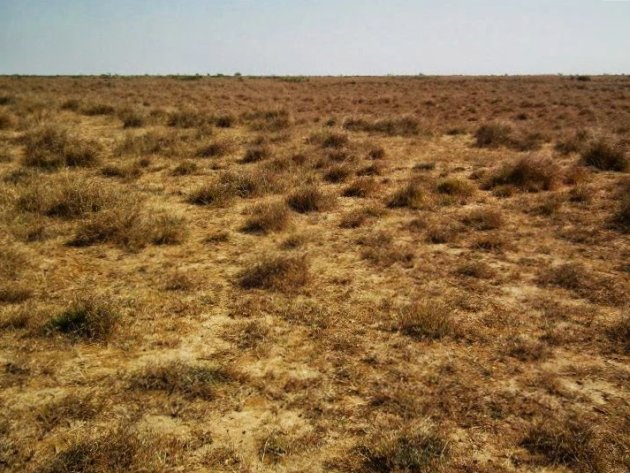
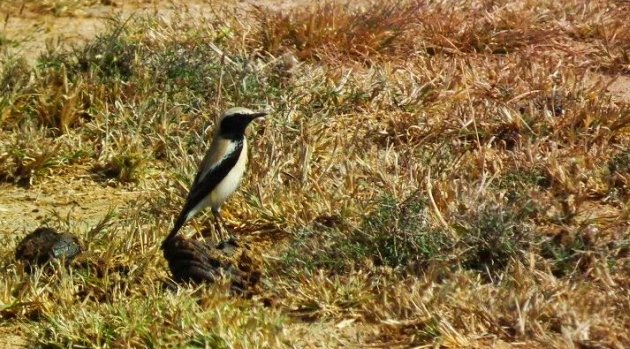
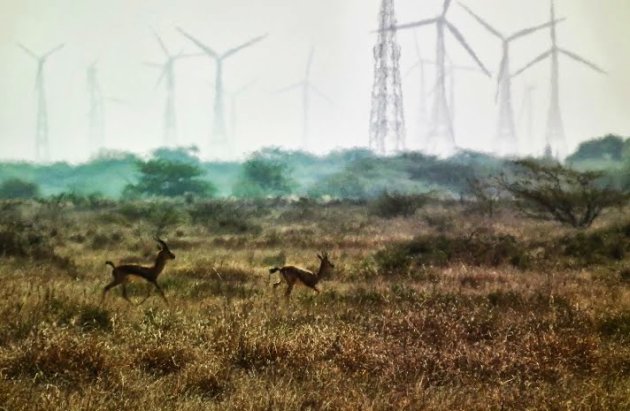
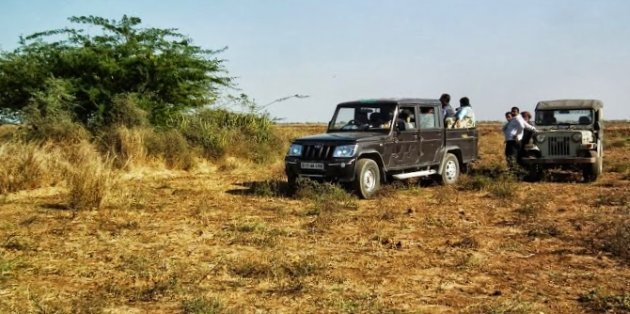
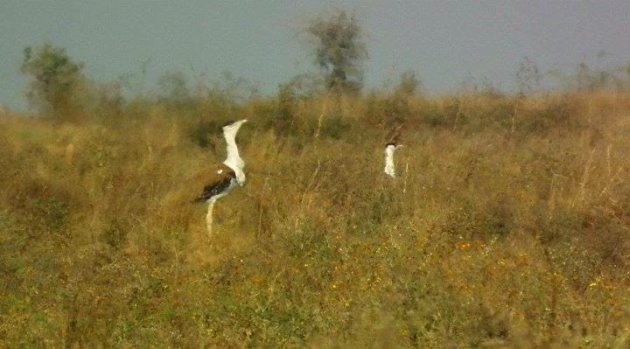
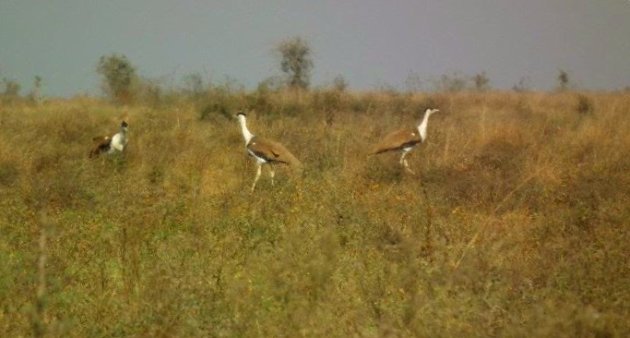








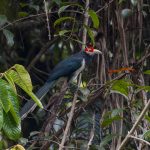


What an informative and enjoyable post. I’m always interested to learn more about the world’s rarest birds, and great Indian bustard was not one I was familiar with. Congratulations on finding it!
Another great narrative.
Oh, the “car indicator”. I remember very well visiting Etosha NP in Namibia. Looking for cars parked next to the road was indeed the best way of finding special mammals. You could actually tell by the number of cars and the way they were parked if you were going to see a rhino, elephants, or some big cat.
Those Indian bustards look amazing, and I can see that they are difficult to find even within an area as small as 2 sqm given the high vegetation.
Thanks – really interesting writing. Also congrats on finding such a special bird (though I have never heard of it) To Jochien (Below)……The advantage of living in Africa is that – when you see a group of cars which are probably surrounding a cat of some species – you can go the other way!!! A
All the very best, Helen
Thanks, Frank
Its habitat there is somewhat bigger, but only two km are officially protected.
Regarding Etosha, once I had plans to go there, but hitting a cow on the road drained all the Etosha funds for repairs. Still, should definitively go there once… and the time – is not on my side, no it isn’t!
(The cow walked away on its own.)
Yep, I’ve had my share of the crowds… am more into unbeaten paths (drivable paths, that is).